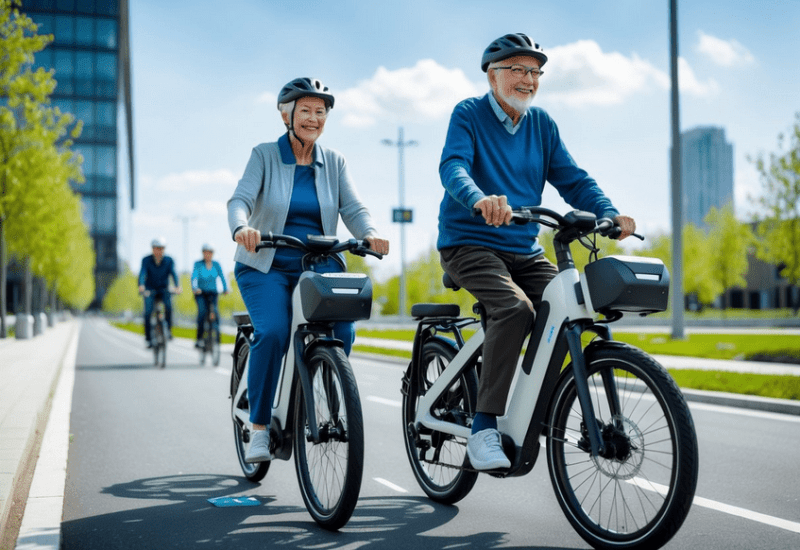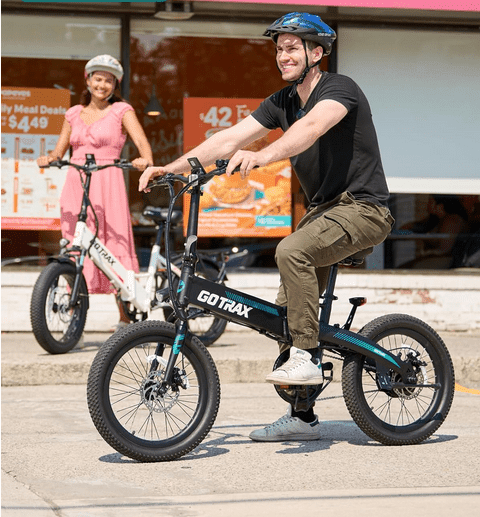Common E-Bike Issues
Introduction
Electric bikes, or e-bikes, have gained immense popularity in recent years as a convenient and eco-friendly mode of transportation. They combine the efficiency of traditional bicycles with the added assistance of an electric motor, making commuting and recreational cycling easier and more enjoyable. However, like any piece of machinery, e-bikes can experience technical issues from time to time. In this article, we will guide you through troubleshooting some common e-bike problems and provide solutions to keep your e-bike running smoothly.
Table of Contents
- Battery-Related Problems
- Insufficient Range
- Battery Not Charging
- Sudden Power Loss
- Motor Malfunctions
- Unresponsiveness
- Strange Noises
- Overheating
- Electrical System Issues
- Faulty Display
- Non-Functional Lights
- Error Codes
- Brake Problems
- Brakes Not Engaging
- Squeaking or Grinding Noises
- Weak Braking
- Tire and Wheel Troubles
- Flat Tires
- Misaligned Wheels
- Broken Spokes
- Gear Shifting Challenges
- Gear Slippage
- Inconsistent Shifting
- Chain Skipping
- Frame and Body Concerns
- Loose Parts
- Cracked Frame
- Rust and Corrosion
- Water and Weather Damage
- Waterlogged Components
- Rust Due to Rain
- Winter Care Tips
- Software and Firmware Glitches
- Software Updates
- Error Messages
- Connectivity Problems
- Troubleshooting Routine Maintenance
- Cleaning and Lubrication
- Regular Inspections
- Tire Pressure Checks
Battery-Related Problems

Insufficient Range
One of the most common e-bike issues is reduced range, where your battery lasts only briefly. To troubleshoot this, first, check the age of your battery. Over time, lithium-ion batteries lose capacity and need replacement. If your battery is relatively new, charge it fully before each ride and avoid storing it in extreme temperatures.
Battery Not Charging
If your e-bike battery is not charging, inspect the bike's charger and charging port. Sometimes, a loose connection can be the culprit. Additionally, verify that the power outlet is functional. If the problem persists, consider seeking professional help to diagnose and repair the issue.
Sudden Power Loss
Experiencing sudden power loss while riding can be concerning. A faulty connection between the battery and the motor or a defective controller may cause this. Check all connections, and if the problem persists, consult an e-bike technician for further examination.
Motor Malfunctions
Unresponsiveness
Check the display panel for error codes or warnings if your e-bike's motor fails to respond when you engage the pedal assist or throttle. Inspect the wiring and connectors between the motor and the battery if there are none. If everything seems fine, there might be an issue with the motor, and you should consult a professional.
Strange Noises
Unusual sounds coming from the motor can indicate a problem. Grinding, rattling, or clicking noises may indicate loose parts or worn bearings. It's essential to address these issues promptly to prevent further damage to the motor.
Overheating
Continuous or excessive use of the motor can lead to overheating. If you notice your motor becoming hot to the touch, give it some time to cool down. Avoid steep inclines and reduce the load on the motor. If overheating persists, have it inspected by an expert?
 Electrical System Issues
Electrical System Issues
Faulty Display
The display panel on your e-bike serves as the control center, providing essential information about speed, battery level, and more. Check the wiring and connections leading to the display if it malfunctions or shows incorrect data. If needed, replace the display unit with a compatible one.
Non-Functional Lights
Lights not turning on or flickering could be due to loose connections or a blown fuse. Inspect the wiring and connectors, and replace any damaged components if necessary. Keeping the lights in working condition is vital for safety during nighttime riding.
Error Codes
Many e-bikes display error codes when something goes wrong. Refer to your bike's manual to understand the meaning of these codes. They can provide valuable insights into the issue, helping you troubleshoot and fix it more efficiently.

Brake Problems
Brakes Not Engaging
Having properly functioning brakes is crucial for safe riding. Check the brake pads for wear if your brakes feel spongy or unresponsive. Replace them if necessary and adjust the brake tension to ensure optimal performance.
Squeaking or Grinding Noises
Unwanted noises while braking often result from contaminated brake pads or misaligned calipers. Clean the brake pads and ensure proper alignment to eliminate these noises.
Weak Braking
Check the cables and brake levers for damage or misadjustment if your brakes don't provide sufficient stopping power. In some cases, a simple adjustment can significantly improve braking performance.
Tire and Wheel Troubles
Flat Tires
A flat tire is a common issue faced by all cyclists. Inspect the tire for any punctures or sharp objects lodged in the tread. Repair punctures or replace the tube if needed.
Misaligned Wheels
Wobbly or misaligned wheels can affect your bike's stability and handling. Check the spoke tension and alignment of the wheels. If necessary, truing the wheels can resolve this problem.
Broken Spokes
Broken spokes can lead to an imbalanced wheel and may cause additional damage if not addressed promptly. Replace broken spokes and inspect neighboring spokes for any signs of damage.
Gear Shifting Challenges
Gear Slippage
If your e-bike's gears slip under load, it could be due to worn gear teeth or a loose shifter cable. Check the gears for wear and adjust the cable tension to resolve the issue.
Inconsistent Shifting
Inconsistent shifting can be bothersome and affect your overall riding experience. Ensure the gear cables are clean and lubricated. If the problem persists, consider replacing the gear cables.
Chain Skipping
A skipping chain may occur if the chain is worn or if the gear teeth are damaged. Inspect the chain for wear, and if necessary, replace it. Additionally, check the gear teeth for signs of damage.
Frame and Body Concerns
Loose Parts
Riding over rough terrains or frequent use can cause some parts of your e-bike's frame to become loose. Inspect and tighten all bolts and screws to maintain a sturdy and safe frame.
Cracked Frame
A cracked frame is a serious issue that compromises the bike's structural integrity. If you notice any cracks or fractures, stop using the bike immediately and consult a professional for repair or replacement.
Rust and Corrosion
Regularly clean and lubricate metal components to prevent rust and corrosion. Rust can weaken the frame and other parts, leading to potential safety hazards.
Water and Weather Damage
Waterlogged Components
Water damage can harm electronic components and reduce their lifespan. Avoid riding in heavy rain or through deep puddles. If your e-bike gets wet, dry it thoroughly and inspect for waterlogged areas.
Rust Due to Rain
Frequent exposure to rain can accelerate rust formation. Regularly apply a protective coating to vulnerable metal parts to minimize rust and corrosion.
Winter Care Tips
In cold weather, the battery performance may be affected. Store the battery in a dry, cool place during winter and avoid leaving it in extremely cold conditions for extended periods.
Software and Firmware Glitches

Software Updates
Keep your e-bike's software and firmware up-to-date, as manufacturers often release updates to improve performance and address bugs. Follow the instructions provided by the manufacturer to install updates correctly.
Error Messages
Error messages on the display panel can indicate various issues. Please consult the user manual or the manufacturer's website to understand the meaning of specific error codes and how to troubleshoot them.
Connectivity Problems
If your e-bike has Bluetooth or other connectivity features, ensure they work correctly. Check for interference from other electronic devices and keep your smartphone or controller within a reasonable range.
Troubleshooting Routine Maintenance
Cleaning and Lubrication
Regularly clean your e-bike to remove dirt and debris that can cause mechanical issues. Additionally, apply lubrication to moving parts, such as chains and gears, to reduce friction and wear.
Regular Inspections
Perform routine inspections of your e-bike to catch potential issues early. Look for signs of wear, loose connections, or damaged components.
Tire Pressure Checks
Maintain proper tire pressure to ensure smooth riding and reduce the risk of flats. Check tire pressure regularly and inflate the tires to the recommended levels.
Conclusion
Owning an e-bike offers numerous benefits, but occasional technical problems are inevitable. Following the troubleshooting tips in this article can address common e-bike issues and keep your ride enjoyable and safe. Remember, proper maintenance and timely repairs are key to extending the lifespan of your e-bike and ensuring its optimal performance.
FAQs
Q: Can I repair e-bike battery issues myself?
A: Minor issues like loose connections can be fixed by users, but it's recommended to entrust significant battery repairs to professionals for safety and proper handling.
Q: How often should I lubricate my e-bike's chain?
A: It's advisable to lubricate the chain approximately every 100-150 miles or whenever it shows signs of dryness or squeaking.
Q: Are e-bikes suitable for hilly terrains?
A: E-bikes are well-suited for hilly terrains due to their motor assistance, which enables riders to easily conquer uphill rides.
Q: Can I ride my e-bike in the rain?
A: While many e-bikes are designed to be water-resistant, it's recommended to avoid riding in heavy rain to minimize the risk of water damage.
Q: How long does an e-bike battery last on average?
A: The average lifespan of an e-bike battery can vary, but with proper care and maintenance, it can typically last around 3 to 5 years.
Related Featured Articles:
Safe Biking for Beginners: Unlock Your Cycling Potential
E-Rider's Guide: Master Your First Test Drive
Electric Bikes and Weight Loss: How Pedal-Assist Can Aid Your Journey


